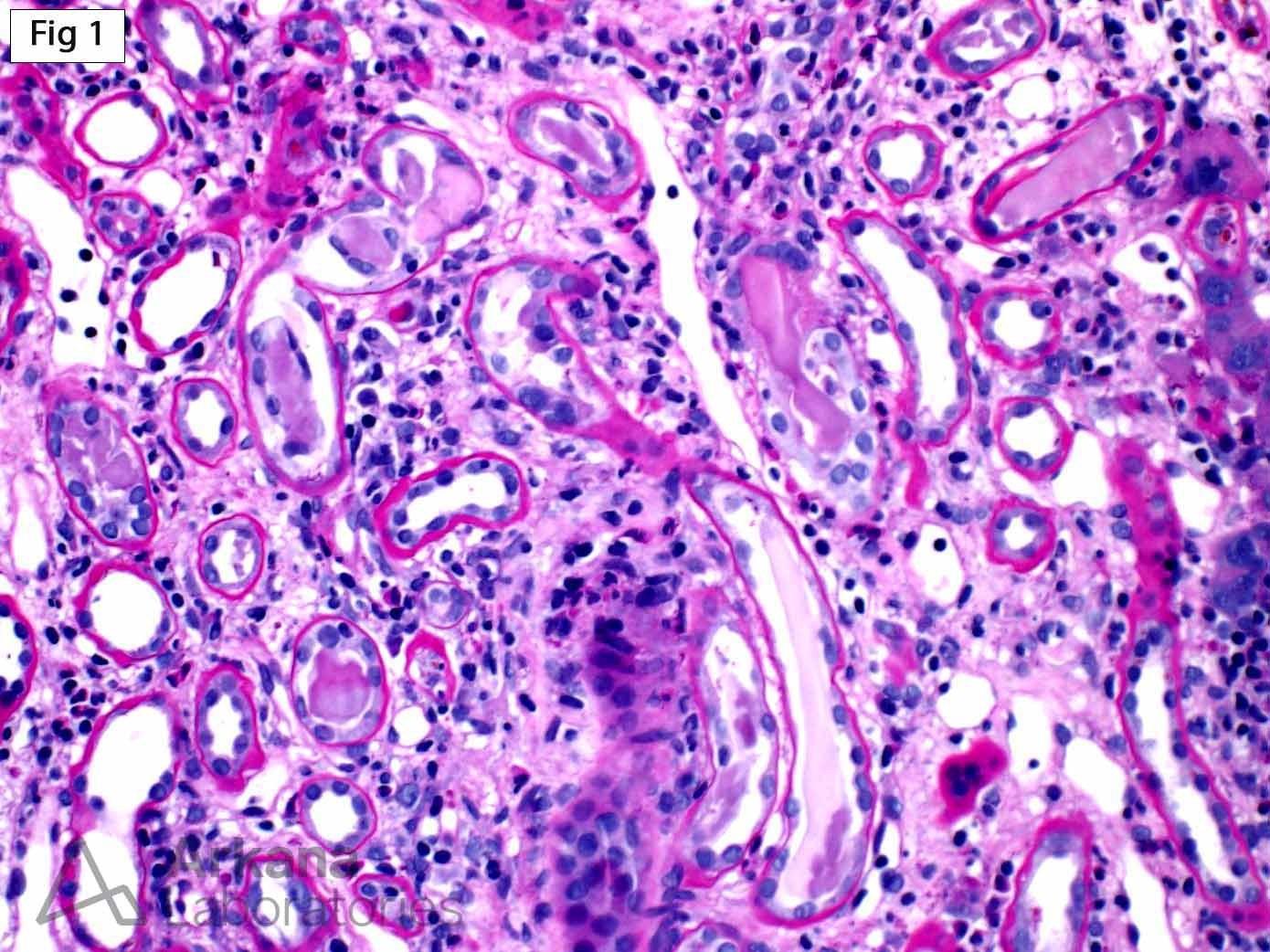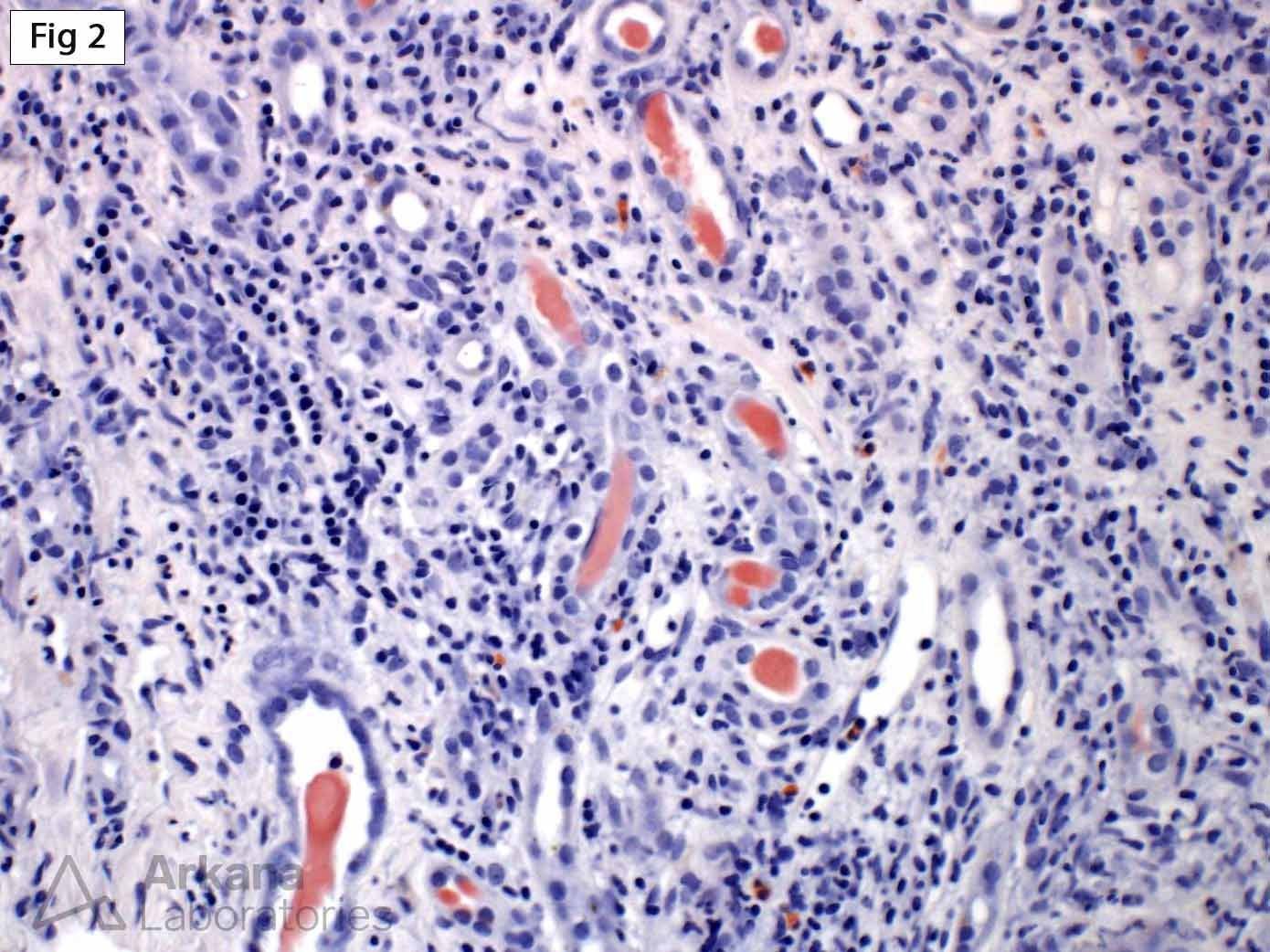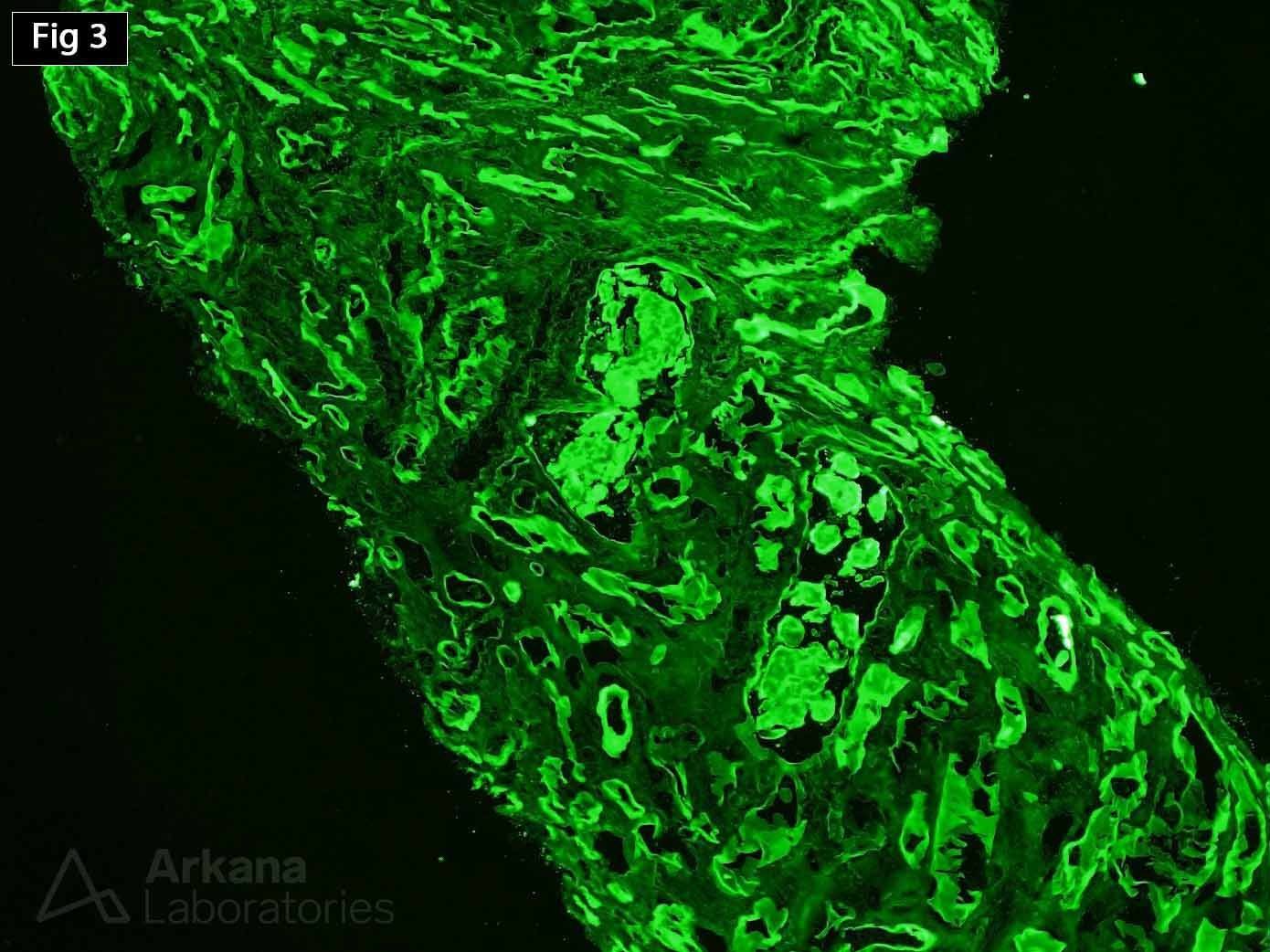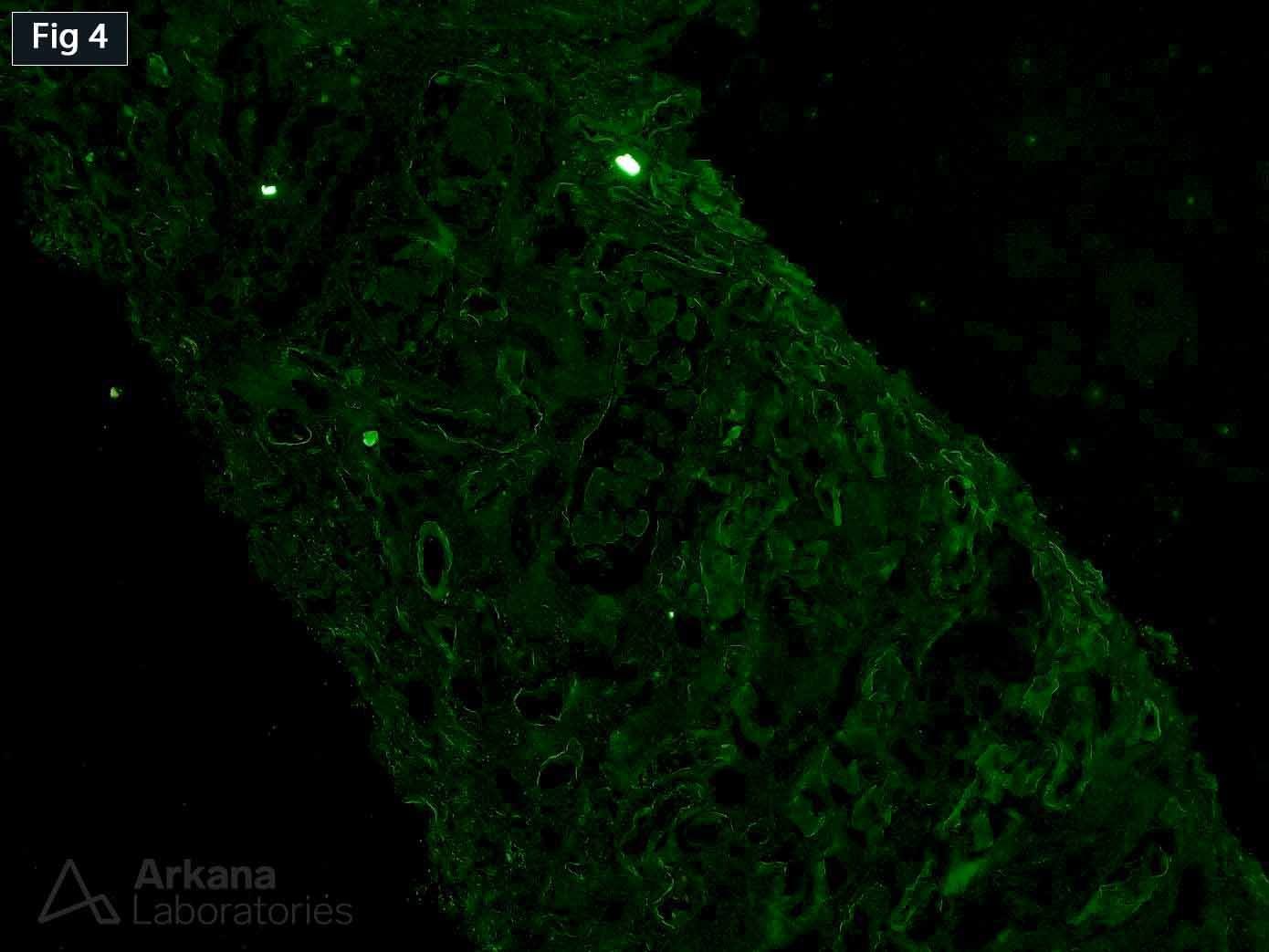This biopsy was taken from a 60-year-old African American female with a history of diabetes mellitus and hypertension, who presented with acute kidney injury and a serum creatinine of 5.8 mg/dl. Workup revealed an IgA kappa monoclonal band by serum protein electrophoresis. The biopsy shows numerous PAS-pale, focally fractured tubular casts with associated cellular reaction (Fig 1). These casts frequently stained positive for Congo red (Fig 2), and focally showed apple-green birefringence upon polarization. Otherwise, Congo red stain was diffusely negative within the glomeruli, interstitium, vessels, and cytoplasm of tubular epithelium. Immunofluorescence showed kappa light chain restriction of the casts (Fig 3: Kappa; Fig 4: lambda). Furthermore, there was strongly positive linear staining of glomerular basement membranes, Bowman’s capsule and tubular basement membranes for kappa light chain (3+) with negative corresponding staining for lambda light chain. Electron microscopy shows occasional thickening of the tubular basement membranes by punctate (powdery) deposits, consistent with light chain deposits. The biopsy findings are consistent with kappa light chain cast nephropathy and kappa light chain deposition disease. A recently published case series of 60 cases of light chain cast nephropathy without renal amyloidosis showed that the presence of light chain cast nephropathy and positive Congo red staining of the casts (intratubular amyloid) was significantly associated with the occurrence of systemic amyloidosis. Of note, the majority of the cases in the series showed lambda restriction of the casts, while the case in discussion showed kappa restriction.
Reference:
Gibier JB, Gnemmi V, Glowacki F, Boyle EM, et al. Intratubular amyloid in light chain cast nephropathy is a risk factor for systemic light chain amyloidosis. Mod Pathol 2018, 31:452-462.
Quick note: This post is to be used for informational purposes only and does not constitute medical or health advice. Each person should consult their own doctor with respect to matters referenced. Arkana Laboratories assumes no liability for actions taken in reliance upon the information contained herein.





